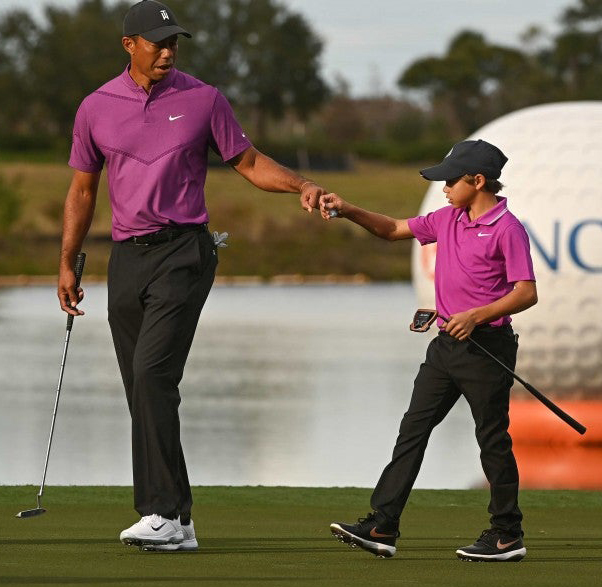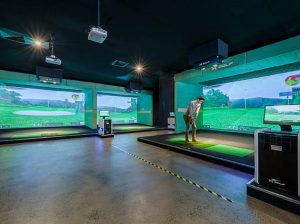A New Year, A New Promise
 The year 2020 will go down as one of the most unusual, if not the unusual, we will see in our lifetimes. The COVID-19 coronavirus wreaked havoc worldwide, with many countries going into lockdown mode and doing their best to keep people apart.
Life in the United States was no exception as governors everywhere mandated business closures, including golf course facilities, in many states. However, a strange and unexpected thing happened: Most courses that were open saw a dramatic upsurge in rounds played and revenue generated, as people were seeking a safe outdoor activity. Golf fit that bill perfectly, and many golfers who had fallen away from the game returned.
With the great news that highly effective vaccines are being approved, we should return to normal sometime by the middle to late part of the year, according to the experts. This means that the momentum generated from 2020 should be even greater in 2021 for the golf business, especially golf teachers. Teaching professionals everywhere saw their lesson books fill, and we should expect the same for 2021. It is important for the industry to continue to be welcoming to all participants who want to give our great game a go, and the USGTF has always been at the forefront on this regard. And speaking of the USGTF, the United States Golf Teachers Cup will return, along with our regional events.
Stay tuned. It’s going to be a great year!
The year 2020 will go down as one of the most unusual, if not the unusual, we will see in our lifetimes. The COVID-19 coronavirus wreaked havoc worldwide, with many countries going into lockdown mode and doing their best to keep people apart.
Life in the United States was no exception as governors everywhere mandated business closures, including golf course facilities, in many states. However, a strange and unexpected thing happened: Most courses that were open saw a dramatic upsurge in rounds played and revenue generated, as people were seeking a safe outdoor activity. Golf fit that bill perfectly, and many golfers who had fallen away from the game returned.
With the great news that highly effective vaccines are being approved, we should return to normal sometime by the middle to late part of the year, according to the experts. This means that the momentum generated from 2020 should be even greater in 2021 for the golf business, especially golf teachers. Teaching professionals everywhere saw their lesson books fill, and we should expect the same for 2021. It is important for the industry to continue to be welcoming to all participants who want to give our great game a go, and the USGTF has always been at the forefront on this regard. And speaking of the USGTF, the United States Golf Teachers Cup will return, along with our regional events.
Stay tuned. It’s going to be a great year!



 A record 20 WGTF member nations contributed content to the current Winter 2021 edition of Golf Teaching Pro magazine. At the risk of leaving some out, it would be too long to list all the nations here, but it suffices to say that many countries are wanting to truly unite as one under the WGTF umbrella and grow the USGTF and WGTF brands. It is important to have this type of cooperation and coordination among the member nations for not only the health of the USGTF, but also each individual federation and its members.
A record 20 WGTF member nations contributed content to the current Winter 2021 edition of Golf Teaching Pro magazine. At the risk of leaving some out, it would be too long to list all the nations here, but it suffices to say that many countries are wanting to truly unite as one under the WGTF umbrella and grow the USGTF and WGTF brands. It is important to have this type of cooperation and coordination among the member nations for not only the health of the USGTF, but also each individual federation and its members.  An incredible finish by South Korea’s A Lim Kim resulted in her winning the very first major championship in which she played, the recently completed U.S. Women’s Open at Champions Golf Club in Houston, Texas. She birdied the final three holes on an extremely difficult track to edge world number one Jin Young Ko from South Korea and Amy Olson from the United States. Olson was playing the final round with a heavy heart as her father-in-law passed away unexpectedly after the third round of play.
Japan’s Hinako Shibuno was the third-round leader, but she wasn’t satisfied with her performance up to that point as she spent a couple of hours on the practice range after the third round. She had reason to suspect her game was off-track as she faltered in the final round to a fourth-place finish. For Kim, her victory highlighted the depth of Korean women’s golf as she was ranked #94 in the world coming into the event, and this represented only her third professional victory.
As usual, a golfer named Woods was the focus of yet another tournament, the PNC Challenge, where major winners teamed up with their parent or child/grandchild in a fun two-day scramble event. However, this golfer wasn’t named Tiger. No, Charlie Woods, all of 11 years old and Tiger’s son, showed off an incredible golf swing and impressive demeanor. It would be virtually impossible for him to even come close to his father’s feats on the golf course, but don’t bet against the young man one day making his mark in the professional ranks.
Former PGA champion Justin Thomas and his father Mike, also a golf professional, fired an impressive final-round 57 to capture the event. Thomas echoed what many of the competitors said, that the experience of playing was far more important than winning. This event’s popularity dates back to the 1990s and is one off-season event that is pure enjoyment for both participants and spectators.
An incredible finish by South Korea’s A Lim Kim resulted in her winning the very first major championship in which she played, the recently completed U.S. Women’s Open at Champions Golf Club in Houston, Texas. She birdied the final three holes on an extremely difficult track to edge world number one Jin Young Ko from South Korea and Amy Olson from the United States. Olson was playing the final round with a heavy heart as her father-in-law passed away unexpectedly after the third round of play.
Japan’s Hinako Shibuno was the third-round leader, but she wasn’t satisfied with her performance up to that point as she spent a couple of hours on the practice range after the third round. She had reason to suspect her game was off-track as she faltered in the final round to a fourth-place finish. For Kim, her victory highlighted the depth of Korean women’s golf as she was ranked #94 in the world coming into the event, and this represented only her third professional victory.
As usual, a golfer named Woods was the focus of yet another tournament, the PNC Challenge, where major winners teamed up with their parent or child/grandchild in a fun two-day scramble event. However, this golfer wasn’t named Tiger. No, Charlie Woods, all of 11 years old and Tiger’s son, showed off an incredible golf swing and impressive demeanor. It would be virtually impossible for him to even come close to his father’s feats on the golf course, but don’t bet against the young man one day making his mark in the professional ranks.
Former PGA champion Justin Thomas and his father Mike, also a golf professional, fired an impressive final-round 57 to capture the event. Thomas echoed what many of the competitors said, that the experience of playing was far more important than winning. This event’s popularity dates back to the 1990s and is one off-season event that is pure enjoyment for both participants and spectators.
 Hollywood, California is where many stars in the entertainment business are made, but Holywood, Northern Ireland, can also lay claim to producing its own star. Rory McIlroy has been a fixture on the international scene since 2007 when he made a splash at The Open as an amateur. Turning pro in September of that year, he scored two top-four finishes in European Tour events to earn his card.
Slated for stardom since he was a youngster, McIlroy has failed to disappoint. By the end of 2008 he moved into the top 50 on the Official Golf World Ranking, and in 2009 he won the Dubai Desert Classic for his first win. By this time, he was well known to golf fans everywhere, and great things were expected. In the 2011 Masters, McIlroy held a four-stroke lead going into the final round, but nerves and a faulty swing played a part as he shot 43 on the final nine. He bounced back to win the U.S. Open later that year, the first of four major victories.
It would take far too long to list his numerous accolades, but McIlroy is known as one of the finest gentlemen in the game, always giving of his time to the media and fans. He and his wife Erica have one daughter.
Hollywood, California is where many stars in the entertainment business are made, but Holywood, Northern Ireland, can also lay claim to producing its own star. Rory McIlroy has been a fixture on the international scene since 2007 when he made a splash at The Open as an amateur. Turning pro in September of that year, he scored two top-four finishes in European Tour events to earn his card.
Slated for stardom since he was a youngster, McIlroy has failed to disappoint. By the end of 2008 he moved into the top 50 on the Official Golf World Ranking, and in 2009 he won the Dubai Desert Classic for his first win. By this time, he was well known to golf fans everywhere, and great things were expected. In the 2011 Masters, McIlroy held a four-stroke lead going into the final round, but nerves and a faulty swing played a part as he shot 43 on the final nine. He bounced back to win the U.S. Open later that year, the first of four major victories.
It would take far too long to list his numerous accolades, but McIlroy is known as one of the finest gentlemen in the game, always giving of his time to the media and fans. He and his wife Erica have one daughter.
 It seems like forever that a typical lesson consisted of a driving range, teaching pro and a student hitting golf balls. The pro would watch the student hit balls, dispense some advice, sometimes using training aids, and then send them on their way.
While this type of lesson still exists, top teachers everywhere are turning to the technology of launch monitors, such as TrackMan, FlightScope and GC Quad. Formerly used mainly as clubfitting tools, these launch monitors are now becoming commonplace. What are the advantages vs. the disadvantages between teaching a traditional lesson and teaching a “modern” lesson?
Modern Virtual Lesson, Advantages – Launch monitors offer the advantage of measuring, plain and simple. The teacher can know whether the clubhead path was left of, right of, or right down the target line at impact. Clubface angle is also precisely measured, as is angle of attack and where on the clubface the ball was struck, as well as clubhead speed. This information can prove invaluable in measuring whether the instruction is working or not, beyond just noting the ball flight, because incremental changes may not be readily apparent by observing ball flight alone.
Modern Virtual Lesson, Disadvantages – Because things can so easily be measured by launch monitors, some students and teachers may become obsessed by the numbers at the expense of real results. A certain level of perfectionism may also set in, leading to frustration.
Traditional Range Lesson, Advantages – Focusing on the actual ball flight alone can be beneficial because that’s the only thing providing feedback. Worrying about numbers and this and that may be distracting to the student, so this solves that problem. And in the end, the student wants to hit the ball better, and ball flight is really the only arbiter in deciding if this is actually happening.
Traditional Range Lesson, Disadvantages – Being unable to measure exactly what the club and ball flight are doing can lead to guesswork. For example, a student who normally slices the ball because the clubface is open may hit a straight shot with an open clubface with contact off the toe (the “gear effect”). This gear effect can completely override the clubface angle, giving both the student and teacher the false impression the student’s clubface was square and that the swing was successful. Also, clubfitting issues may be diagnosed with launch monitors that a traditional range lesson may not be able to deduce.
By Mark Harman, USGTF Director of Education
It seems like forever that a typical lesson consisted of a driving range, teaching pro and a student hitting golf balls. The pro would watch the student hit balls, dispense some advice, sometimes using training aids, and then send them on their way.
While this type of lesson still exists, top teachers everywhere are turning to the technology of launch monitors, such as TrackMan, FlightScope and GC Quad. Formerly used mainly as clubfitting tools, these launch monitors are now becoming commonplace. What are the advantages vs. the disadvantages between teaching a traditional lesson and teaching a “modern” lesson?
Modern Virtual Lesson, Advantages – Launch monitors offer the advantage of measuring, plain and simple. The teacher can know whether the clubhead path was left of, right of, or right down the target line at impact. Clubface angle is also precisely measured, as is angle of attack and where on the clubface the ball was struck, as well as clubhead speed. This information can prove invaluable in measuring whether the instruction is working or not, beyond just noting the ball flight, because incremental changes may not be readily apparent by observing ball flight alone.
Modern Virtual Lesson, Disadvantages – Because things can so easily be measured by launch monitors, some students and teachers may become obsessed by the numbers at the expense of real results. A certain level of perfectionism may also set in, leading to frustration.
Traditional Range Lesson, Advantages – Focusing on the actual ball flight alone can be beneficial because that’s the only thing providing feedback. Worrying about numbers and this and that may be distracting to the student, so this solves that problem. And in the end, the student wants to hit the ball better, and ball flight is really the only arbiter in deciding if this is actually happening.
Traditional Range Lesson, Disadvantages – Being unable to measure exactly what the club and ball flight are doing can lead to guesswork. For example, a student who normally slices the ball because the clubface is open may hit a straight shot with an open clubface with contact off the toe (the “gear effect”). This gear effect can completely override the clubface angle, giving both the student and teacher the false impression the student’s clubface was square and that the swing was successful. Also, clubfitting issues may be diagnosed with launch monitors that a traditional range lesson may not be able to deduce.
By Mark Harman, USGTF Director of Education